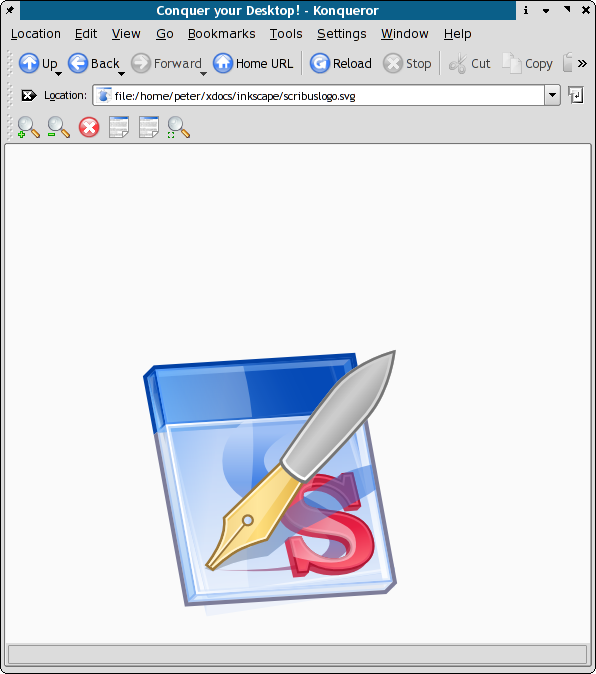
Scribus includes SVG import/export plug-ins, which enables you to export Scribus pages or objects as SVG. The import plug-in allows you to import SVG drawings and documents from illustration programs like Inkscape, Skencil and Adobe Illustrator.
These plug-ins have the capability to import and export SVG 1.0 standards 2D graphics primitives and text, which can then be displayed in web browsers with SVG capability, within SVG viewers or further edited with SVG capable vector editors, like Skencil, Inkscape or Adobe Illustrator.
Simply have the page you want to be exported open, selected and use File > Export > Save as SVG..
Go File..>Import SVG Image When you import an SVG image or drawing, it will appear like an object from the Scrapbook. Drag the cursor where you want to place the SVG image.
Scribus can handle most of the SVG features which can be created in Inkscape and Sketch, two well known vector drawing programs for Linux. The biggest issue I have observed is sometimes the paths when interpreted do not show up as closed. So parts of the SVG file look empty upon import. The simple fix is to ungroup the elements and then select the empty looking objects, then double click to bring up the editing palette for drawing objects and click on the close path button. Typically, then the invisible object will appear.
I strongly recommend against creating special text effects in SVG, unless a: It cannot be done in Scribus and Scribus has very versatile text effect tools. b: The text effects are converted to outlines before importation. Why ? Scribus uses a postscript model for handling fonts and text, where SVG uses a model much like html. In the case where you need to create them in another program, converting the text to outlines will be far more satisfactory.
SVG (Scalable Vector Graphics) is a W3C recommended standard for vector graphics like line drawings, maps and logos.
Increasingly, Scribus has more sophisticated drawing tools, which are both familiar and easy to use. End users might like to use Scribus created objects in other applications like web design. Many other applications can import SVG and export an SVG object into other file formats. This also makes it easy for your print and web objects to be created from the same source.
Basic 2D graphics and text. Text on a path works sometimes with other applications, sometimes not. Adobe Illustrator and Sodipodi (increasingly) both do a good job of importing Scribus SVG. All features in a Scribus doc can be exported as SVG. Images within a page are converted to PNG. The Amaya Web browser will also display Scribus SVG. Some builds of Mozilla have native SVG rendering built in and future versions may include this in standard builds.
The current version of the SVG-Import Plug-in has the following limitations:
SVG as a file format has many advantages:
Firefox 1.5 and Konqueror 3.4.0+ on Linux support SVG natively. Also interesting is the latest SVG plug-in from Adobe; it works well in my testing with Mozilla 1.4+.
SVG Foundation has a wealth of links and news.
Other links are listed in the Links page
 |